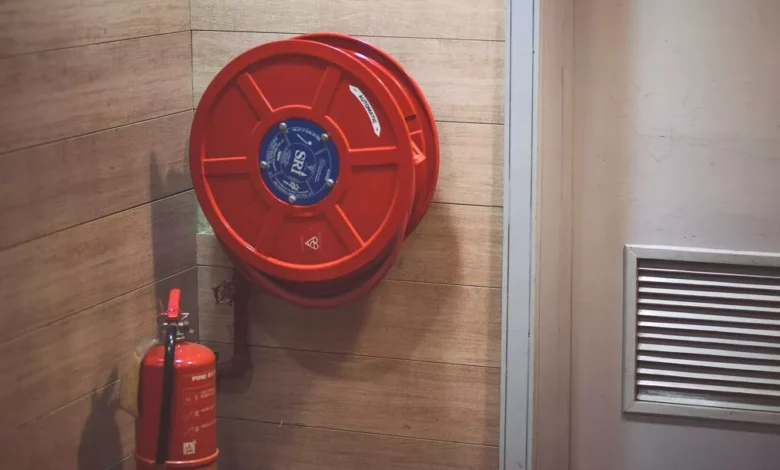A Comprehensive Guide to Fire Doors, Extinguishers, and CO Alarms

Fire safety is a critical priority for any home or workplace, requiring a combination of tools to prevent, detect, and respond to emergencies. Fire doors, extinguishers, and carbon monoxide (CO) alarms are among the most essential components of a robust safety plan. Each serves a unique purpose, from containing fires to suppressing them and protecting against invisible threats like CO. This comprehensive guide explores how these tools work together to create a safer environment and how to choose, install, and maintain them effectively.
The Foundation of Fire Safety
Fires can start unexpectedly and spread rapidly, while CO poisoning poses a silent, deadly risk. A well-rounded safety strategy integrates tools that address prevention, early detection, and rapid response. Fire doors, extinguishers, and CO alarms form the backbone of this approach, working together to minimize risks and protect lives. Understanding their roles and how to implement them is key to creating a secure space.
Fire Doors: Containing Flames and Smoke
Internal Fire Doors are designed to slow the spread of fire and smoke, providing critical time for evacuation and limiting property damage. Rated as FD30 (30 minutes) or FD60 (60 minutes), these doors act as barriers, compartmentalizing buildings to prevent fires from engulfing entire spaces. If you’re based in the UK, it’s worth reviewing this fire door regulations guide by Latham Steel to understand the legal requirements for installation, maintenance, and compliance.
When choosing fire doors, ensure they meet local fire safety standards and are fitted with intumescent seals that expand when heated to block smoke. Self-closing mechanisms are essential to ensure the door functions during an emergency. Install fire doors in high-risk areas like stairwells, kitchens, or near electrical equipment. Regular maintenance is crucial—check for damaged seals, warped frames, or obstructions that could prevent proper closure.
Fire Extinguishers: Tackling Fires Early
Fire extinguishers are indispensable for putting out small fires before they grow out of control. Different extinguishers are suited for specific fire classes:
- Class A: Wood, paper, or textiles.
- Class B: Flammable liquids like gasoline or oil.
- Class C: Electrical equipment.
- Class F: Cooking oils or fats.
A versatile option like the P50 fire extinguisher is ideal for homes and workplaces, as it effectively handles Class A, B, and C fires with minimal maintenance. Place extinguishers in accessible locations, such as kitchens, garages, or near exits, ensuring they’re clearly marked and unobstructed. Train occupants to use them with the PASS technique: Pull the pin, Aim at the fire’s base, Squeeze the handle, and Sweep side to side. Regular checks—monthly for pressure and annually by a professional—ensure they’re ready for action.
Carbon Monoxide Alarms: Protecting Against the Silent Killer
Carbon monoxide is an odorless, colorless gas produced by incomplete combustion in appliances like gas heaters, stoves, or generators. SafeLinc’s Travel Co Alarm are essential for detecting this invisible threat, which can cause severe illness or death. Install CO alarms on every level of your home or workplace, particularly near bedrooms and fuel-burning appliances. For travelers, a portable CO detector with a strap is a compact solution for hotels or vacation rentals, offering peace of mind on the go.
Choose alarms with digital displays for real-time CO level monitoring and test them monthly. Replace batteries annually or opt for long-life models with sealed batteries. Combination alarms that detect both smoke and CO can streamline your safety setup while providing comprehensive protection.
Integrating Fire Doors, Extinguishers, and CO Alarms
These tools work best when used together. Fire doors buy time by containing flames, CO alarms alert you to invisible dangers, and extinguishers allow you to tackle small fires. For example, in a workplace, fire doors can isolate a server room fire, while CO alarms detect gas leaks from a faulty heater, and extinguishers address small electrical fires. In homes, fire doors in stairwells provide safe evacuation routes, CO alarms protect against furnace malfunctions, and extinguishers handle kitchen fires.
To integrate effectively:
- Map Your Space: Identify high-risk areas like kitchens, electrical rooms, or sleeping quarters, and place tools strategically.
- Create Layers of Protection: Use fire doors for containment, alarms for detection, and extinguishers for response.
- Plan Evacuation Routes: Ensure fire doors and extinguishers are near exits, and CO alarms are near sleeping areas for early warnings.
Maintenance and Testing
Regular upkeep is critical to ensure these tools function when needed. Inspect fire doors monthly for damage, worn seals, or faulty closers. Check extinguisher pressure gauges to confirm they’re in the green zone, and schedule annual professional servicing. Test CO and smoke alarms monthly, replacing batteries yearly or as needed. Keep a maintenance log to track inspections and comply with local fire codes.
Training and Preparedness
Tools are only effective if people know how to use them. Conduct fire drills twice a year to practice evacuation routes and extinguisher use. Teach the PASS technique for extinguishers and ensure everyone knows the location of fire doors and alarms. In workplaces, appoint fire wardens to oversee drills and safety compliance. For travelers, practice setting up portable CO detectors in temporary accommodations and familiarize yourself with exit routes.
Tailoring to Your Needs
Every environment has unique risks. Homes with young children may need fire doors on upper levels and portable extinguishers for easy access. Workplaces with heavy machinery should prioritize CO2 or dry powder extinguishers like the P50 and fire doors in high-risk zones. Travelers should carry compact CO detectors and fire blankets for added security. Assess your space for hazards—flammable materials, gas appliances, or electrical equipment—and select tools accordingly.
Final Thoughts
A comprehensive fire safety plan hinges on the right combination of tools and practices. Internal fire doors, versatile extinguishers like the P50, and reliable CO alarms create a strong defense against fire and CO risks. By choosing equipment suited to your environment, maintaining it diligently, and training occupants, you can ensure a swift and safe response in any emergency. Stay proactive, stay prepared, and make safety a priority in every setting.




